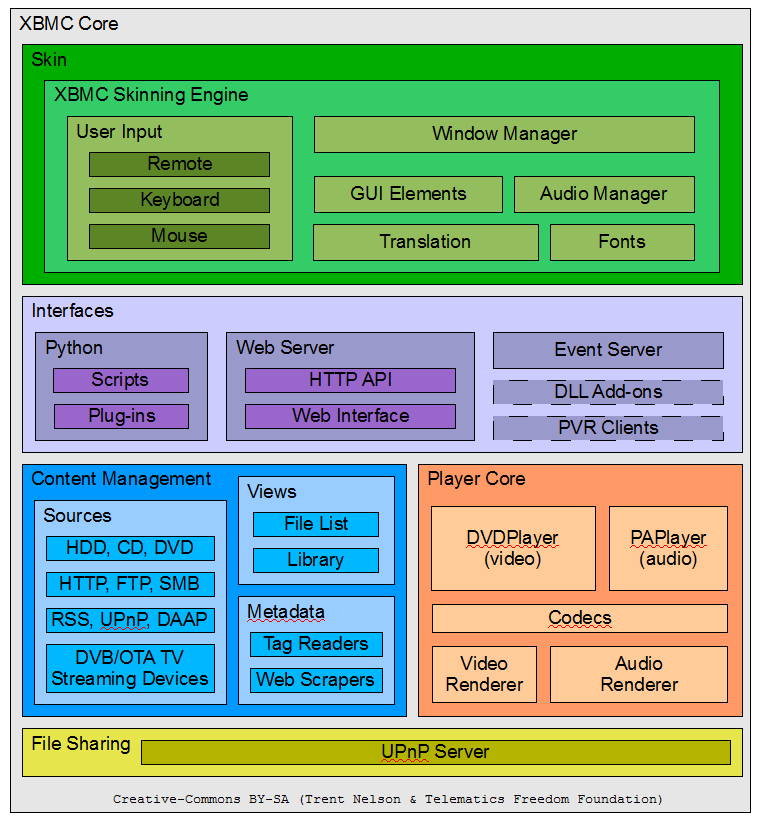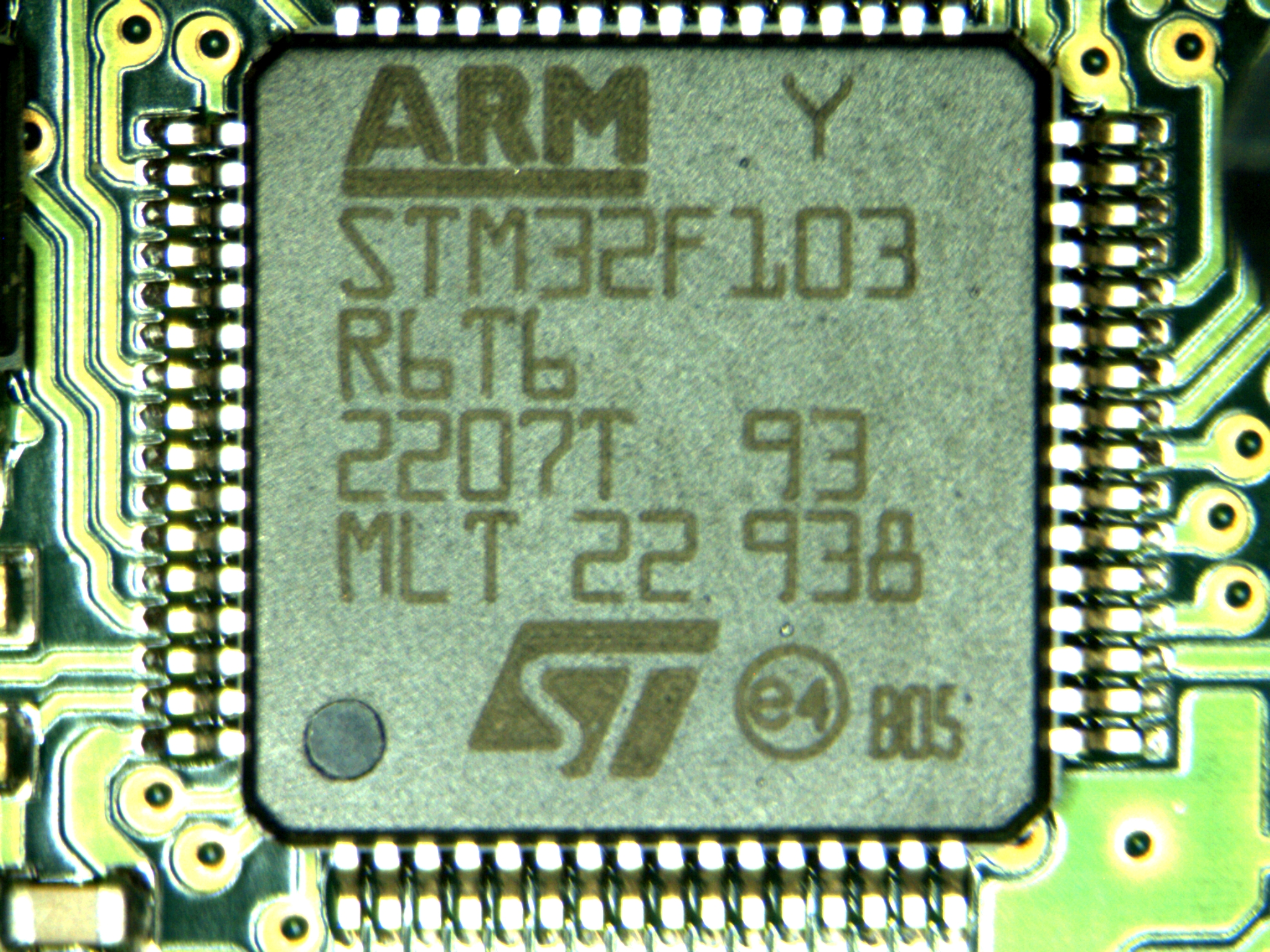|
Dreambox
Dreambox is a series of Linux-powered DVB satellite, terrestrial and cable digital television receivers (set-top boxes), produced by German multimedia vendor Dream Multimedia. History and description The Linux-based production software originally used by Dreambox was originally developed for DBox2, by the Tuxbox project. The Dbox2 was a proprietary design distributed by KirchMedia for their pay TV services. The bankruptcy of KirchMedia flooded the market with unsold boxes available for Linux enthusiasts. The Dreambox shares the basic design of the DBox2, including the Ethernet port and the PowerPC processor. Its firmware is officially user-upgradable, since it is a Linux-based computer, as opposed to third-party "patching" of alternate receivers. All units support Dream's own DreamCrypt conditional access (CA) system, with software-emulated Conditional-access module, CA Modules (CAMs) available for many alternate CA systems. The built-in Ethernet interface allows networked c ... [...More Info...] [...Related Items...] OR: [Wikipedia] [Google] [Baidu] |
DBox2
The DBox is a DVB satellite and cable digital television integrated receiver decoder (set-top box). They were distributed widely for use with Pay television channels. It was commissioned by the Kirch group's DF1, an early German provider of digital television that later merged with Premiere. The hardware was developed and produced by Nokia though later also produced by Philips and Sagem under license. The combination of third-party developers and network connectivity which facilitates card sharing, makes DBox2 (and the DBox2 based Dreambox) use particularly common among enthusiasts and those who intend to obtain services without payment. It also enables the receiver to store digital copies of DVB MPEG transport streams on networked filesystems or broadcast the streams as IPTV to VideoLAN and XBMC Media Center clients. In 2001, following the bankruptcy of Kirch Media, production of the D-box ceased. However, many devices continue to be traded second-hand (often using onl ... [...More Info...] [...Related Items...] OR: [Wikipedia] [Google] [Baidu] |
XBMC
Kodi (formerly XBMC) is a free and open-source media player software application developed by the XBMC Foundation, a non-profit technology consortium. Kodi is available for multiple operating systems and hardware platforms, with a software 10-foot user interface for use with televisions and remote controls. It allows users to play and view most streaming media, such as videos, music, podcasts, and videos from the Internet, as well as all common digital media files from local and network storage media. Kodi is a multi-platform home-theater PC (HTPC) application. It is customizable: skins can change its appearance, and plug-ins allow users to access streaming media content via online services such as Amazon Prime Instant Video, Crackle, Pandora Internet Radio, Rhapsody, Spotify, and YouTube. The later versions also have a personal video-recorder (PVR) graphical front end for receiving live television with electronic program guide (EPG) and high-definition digital video re ... [...More Info...] [...Related Items...] OR: [Wikipedia] [Google] [Baidu] |
Conditional Access
Conditional access (CA) is a term commonly used in relation to software and to digital television systems. Conditional access is that ‘just-in-time’ evaluation to ensure the person who is seeking access to content is authorized to access the content. Said another way, conditional access is a type of access management. Access is managed is by requiring certain criteria to be met before granting access to the content. In software Conditional access is a function that lets you manage people’s access to the software in question, such as email, applications, and documents. It is usually offered as SaaS (Software-as-a-Service) and deployed in organizations to keep company data safe. By setting conditions on the access to this data, the organization has more control over who accesses the data and where and in what way the information is accessed. When setting up conditional access, access can be limited to or prevented based on the policy defined by the system administrator. Fo ... [...More Info...] [...Related Items...] OR: [Wikipedia] [Google] [Baidu] |
MPEG Transport Stream
MPEG transport stream (MPEG-TS, MTS) or simply transport stream (TS) is a standard digital container format for transmission and storage of audio, video, and Program and System Information Protocol (PSIP) data. It is used in broadcast systems such as DVB, ATSC and IPTV. Transport stream specifies a container format encapsulating packetized elementary streams, with error correction and synchronization pattern features for maintaining transmission integrity when the communication channel carrying the stream is degraded. Transport streams differ from the similarly-named MPEG program stream in several important ways: program streams are designed for reasonably reliable media, such as discs (like DVDs), while transport streams are designed for less reliable transmission, namely terrestrial or satellite broadcast. Further, a transport stream may carry multiple programs. Transport stream is specified in '' MPEG-2 Part 1, Systems'', formally known as '' ISO/IEC standard ... [...More Info...] [...Related Items...] OR: [Wikipedia] [Google] [Baidu] |
HDTV
High-definition television (HD or HDTV) describes a television system which provides a substantially higher image resolution than the previous generation of technologies. The term has been used since 1936; in more recent times, it refers to the generation following standard-definition television (SDTV), often abbreviated to HDTV or HD-TV. It is the current de facto standard video format used in most broadcasts: terrestrial broadcast television, cable television, satellite television and Blu-ray Discs. Formats HDTV may be transmitted in various formats: * 720p (1280 horizontal pixels × 720 lines): 921,600 pixels * 1080i (1920×1080) interlaced scan: 1,036,800 pixels (~1.04 MP). * 1080p (1920×1080) progressive scan: 2,073,600 pixels (~2.07 MP). ** Some countries also use a non-standard CEA resolution, such as 1440×1080i: 777,600 pixels (~0.78 MP) per field or 1,555,200 pixels (~1.56 MP) per frame When transmitted at two megapixels per frame, HDTV provides about five times a ... [...More Info...] [...Related Items...] OR: [Wikipedia] [Google] [Baidu] |
RISC
In computer engineering, a reduced instruction set computer (RISC) is a computer designed to simplify the individual instructions given to the computer to accomplish tasks. Compared to the instructions given to a complex instruction set computer (CISC), a RISC computer might require more instructions (more code) in order to accomplish a task because the individual instructions are written in simpler code. The goal is to offset the need to process more instructions by increasing the speed of each instruction, in particular by implementing an instruction pipeline, which may be simpler given simpler instructions. The key operational concept of the RISC computer is that each instruction performs only one function (e.g. copy a value from memory to a register). The RISC computer usually has many (16 or 32) high-speed, general-purpose registers with a load/store architecture in which the code for the register-register instructions (for performing arithmetic and tests) are separate ... [...More Info...] [...Related Items...] OR: [Wikipedia] [Google] [Baidu] |
MIPS Architecture
MIPS (Microprocessor without Interlocked Pipelined Stages) is a family of reduced instruction set computer (RISC) instruction set architectures (ISA)Price, Charles (September 1995). ''MIPS IV Instruction Set'' (Revision 3.2), MIPS Technologies, Inc. developed by MIPS Computer Systems, now MIPS Technologies, based in the United States. There are multiple versions of MIPS: including MIPS I, II, III, IV, and V; as well as five releases of MIPS32/64 (for 32- and 64-bit implementations, respectively). The early MIPS architectures were 32-bit; 64-bit versions were developed later. As of April 2017, the current version of MIPS is MIPS32/64 Release 6. MIPS32/64 primarily differs from MIPS I–V by defining the privileged kernel mode System Control Coprocessor in addition to the user mode architecture. The MIPS architecture has several optional extensions. MIPS-3D which is a simple set of floating-point SIMD instructions dedicated to common 3D tasks, MDMX (MaDMaX) which is a more extens ... [...More Info...] [...Related Items...] OR: [Wikipedia] [Google] [Baidu] |
PowerPC
PowerPC (with the backronym Performance Optimization With Enhanced RISC – Performance Computing, sometimes abbreviated as PPC) is a reduced instruction set computer (RISC) instruction set architecture (ISA) created by the 1991 Apple– IBM–Motorola alliance, known as AIM. PowerPC, as an evolving instruction set, has been named Power ISA since 2006, while the old name lives on as a trademark for some implementations of Power Architecture–based processors. PowerPC was the cornerstone of AIM's PReP and Common Hardware Reference Platform (CHRP) initiatives in the 1990s. Originally intended for personal computers, the architecture is well known for being used by Apple's Power Macintosh, PowerBook, iMac, iBook, eMac, Mac Mini, and Xserve lines from 1994 until 2005, when Apple migrated to Intel's x86. It has since become a niche in personal computers, but remains popular for embedded and high-performance processors. Its use in 7th generation of video game consoles and ... [...More Info...] [...Related Items...] OR: [Wikipedia] [Google] [Baidu] |
System-on-a-Chip
A system on a chip or system-on-chip (SoC ; pl. ''SoCs'' ) is an integrated circuit that integrates most or all components of a computer or other electronic system. These components almost always include a central processing unit (CPU), memory interfaces, on-chip input/output devices, input/output interfaces, and secondary storage interfaces, often alongside other components such as radio modems and a graphics processing unit (GPU) – all on a single substrate or microchip. It may contain digital, analog, mixed-signal, and often radio frequency signal processing functions (otherwise it is considered only an application processor). Higher-performance SoCs are often paired with dedicated and physically separate memory and secondary storage (such as LPDDR and eUFS or eMMC, respectively) chips, that may be layered on top of the SoC in what's known as a package on package (PoP) configuration, or be placed close to the SoC. Additionally, SoCs may use separate wireless modem ... [...More Info...] [...Related Items...] OR: [Wikipedia] [Google] [Baidu] |
STMicroelectronics
STMicroelectronics N.V. commonly referred as ST or STMicro is a Dutch multinational corporation and technology company of French-Italian origin headquartered in Plan-les-Ouates near Geneva, Switzerland and listed on the French stock market. ST is the largest European semiconductor contract manufacturing and design company. The company resulted from the merger of two government-owned semiconductor companies in 1987: Thomson Semiconducteurs of France and SGS Microelettronica of Italy. History ST was formed in 1987 by the merger of two government-owned semiconductor companies: Italian SGS Microelettronica (where SGS stands for ''Società Generale Semiconduttori'', "Semiconductors' General Company"), and French Thomson Semiconducteurs, the semiconductor arm of Thomson. SGS Microelettronica originated in 1972 from a previous merger of two companies: * ATES (Aquila Tubi e Semiconduttori), a vacuum tube and semiconductor maker headquartered in L'Aquila, the regional capital of th ... [...More Info...] [...Related Items...] OR: [Wikipedia] [Google] [Baidu] |
Free-to-air
Free-to-air (FTA) services are television (TV) and radio services broadcast in unencrypted form, allowing any person with the appropriate receiving equipment to receive the signal and view or listen to the content without requiring a subscription, other ongoing cost, or one-off fee (e.g., pay-per-view). In the traditional sense, this is carried on terrestrial radio signals and received with an antenna. FTA also refers to channels and broadcasters providing content for which no subscription is expected, even though they may be delivered to the viewer/listener by another carrier for which a subscription is required, e.g., cable television, the Internet, or satellite. These carriers may be mandated (or OPT) in some geographies to deliver FTA channels even if a premium subscription is not present (providing the necessary equipment is still available), especially where FTA channels are expected to be used for emergency broadcasts, similar to the 1-1-2 (112) emergency service provi ... [...More Info...] [...Related Items...] OR: [Wikipedia] [Google] [Baidu] |





